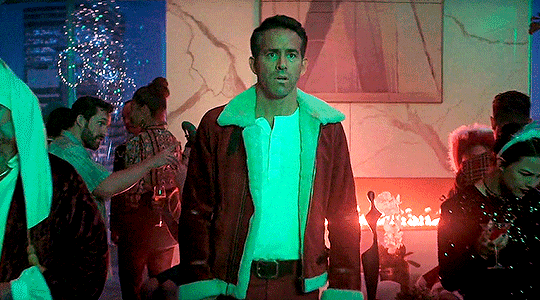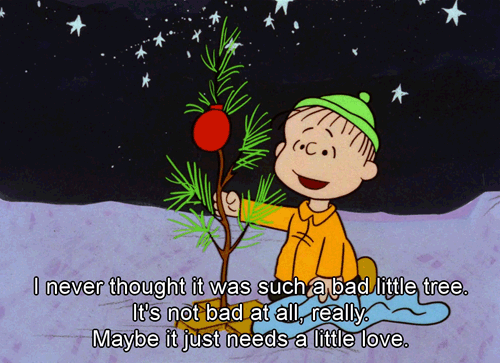Folklore Fact – Christmas trees!
It’s Christmastime! The most wonderful time of the year! And after holding a festive poll on my Patreon, Christmas trees are the very clear winner for this month’s folklore fact. Let’s dive right in…

(Couldn’t resist)
There are a lot of different theories about Christmas trees. All kinds of concepts about how they might’ve originated, who had them first – so let’s start at the “beginning,” per se.
First off, various sources – including most prominently the Encyclopedia Britannica – mention that many cultures saw evergreens as representing eternal life. Makes sense, given they’re always green. The ancient Egyptians, Chinese, and Hebrews used evergreen garlands, trees, and – yes – wreaths to symbolize eternal life, and they were used in worship.
Likewise, worship of trees was common among Scandinavian cultures and many other European cultures besides; for instance, the great tree at the Temple at Uppsala was said to be evergreen and was where sacrifices were hanged (including men, horses, dogs, and others)…

(sacrifices hanging in the trees at the temple at Uppsala)
Continuing the sacredness of trees in Scandinavian cultures, decorating the house with evergreens at the end of the year warded away the devil, and sometimes trees were set up for birds to nest in during Christmas time. There was also the very important Yule log during the time of Yule, although that was a log to burn, not a tree. The Yule log is still a tradition today.
However, none of this is the same as bringing a tree into your home and decorating it with candles, gold, and whatever else – and certainly not hanging sacrifices on it. So what really started the Christmas tree we have today?

The evergreen was kind of always specifically related to sanctity and everlasting life in Christianity. After Donar’s Oak (a sacred pagan tree) was felled by the Christian Saint Boniface and his retinue, some later versions of the tale include an evergreen growing in its place, its triangular shape representing the Holy Trinity. Likewise, we have Roman sources mentioning Christians decorating their homes in evergreens.
Decorated trees and evergreen elements appear throughout Christian lore over many time periods. For instance, Christmas trees have often been equated to the “tree of paradise” found in the mystery plays of the Middle Ages, which were held on what is now Christmas Eve (December 24). A tree decorated with apples – the forbidden fruit of original sin, which Christ took away – and white wafers (redemption and the Eucharist) was used in plays about Adam and Eve on their name day. Later, this tree was placed in homes, and the red apples became shiny red balls – the same ones we know and love today. It’s entirely possible these were our first Christmas trees.
It is often thought the first reference to real “Christmas trees” appears toward the end of the medieval period in the 15th century in the writings of the Regiment of the Cistercian Alcobaça Monastery in Portugal…
“Note on how to put the Christmas branch, scilicet: On the Christmas eve, you will look for a large Branch of green laurel, and you shall reap many red oranges, and place them on the branches that come of the laurel, specifically as you have seen, and in every orange you shall put a candle, and hang the Branch by a rope in the pole, which shall be by the candle of the high altar.”
Many of these traditions still live on today.
Generally, Christmas trees are considered to be largely in the Baltic regions and Central Europe. Some people also ascribe the Christmas tree to Martin Luther, who may have been the first to add candles to decorating trees. There is also a representation of a Christmas tree in a keystone sculpture of a home in Turckheim, Alsace (part of France today, formerly in the Holy Roman Empire of the German Nation). This dates to 1576.
So, are there pre-Christian origins to the Christmas tree? Maybe, as depending upon whom you ask, it did depend on region and denomination in the past – but it’s also possible that it was a separate Christian concept and originated from the tale of Adam and Eve and the redemption brought by Jesus Christ, originating even before what some scholars consider to be the first real representations of Christmas trees.
We can’t “prove,” necessarily, that the evergreens of Christianity came from any one particular previous source. Although all cultures that became Christian were certainly influenced by their previous customs, it could’ve also been something that originated independently in Christian culture or came about influenced by not one but multiple concepts and cultures. No other culture quite approached it the exact same way as did Christians, same as they never fully approached it the same way among one another. There are many cases of similar traditions developing independently, as is already evident in the idea of evergreen representing eternal life (which of course makes sense) across many cultures that had little or no communication with each other during these time periods.
So… who knows! It was and is a subject of debate among scholars. Either way, the Christmas tree is now undeniably an important part of Christmas and the Christmas season. It just isn’t Christmas without the trees.
And that’s this year’s Christmas folklore fact! If that really counts as folklore. Religious fact? Anyway!
Until next time, and I truly wish everyone a very merry Christmas and a wonderful new year! It’s the best time of the year, and I hope it’s fantastic for us all.